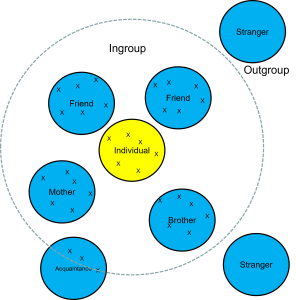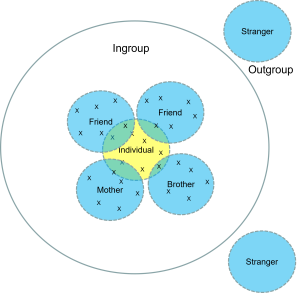1-4: The Future of I/O Psychology

Today’s Challenges and Tomorrow’s Opportunities
The Modern Workplace Reality
Today’s I/O psychologists face challenges that earlier generations could hardly have imagined:
Global Competition and Collaboration: Organizations need workforces that can compete internationally and collaborate across cultures, time zones, and languages. This means understanding cultural differences in motivation, communication styles, decision-making, and teamwork. Companies need well-trained, competent workers to compete favorably with other countries, making talent development more critical than ever.
Accelerating Technological Change: Automation, artificial intelligence, and robotics are transforming jobs faster than ever before. Some jobs disappear entirely while entirely new categories of work emerge. Technology-based downsizing means I/O psychologists need to help laid-off workers become competitive again while also helping those left behind who are asked to do more diverse jobs with heavier workloads.
Flatter, More Agile Organizations: Many companies have eliminated layers of middle management, giving remaining employees more responsibility, autonomy, and decision-making authority. This requires new approaches to motivation, development, and performance management when traditional hierarchical structures no longer apply. Workers need preparation for greater responsibility and different approaches to self-motivation.
Unprecedented Workforce Diversity: Today’s workplace includes people from different generations (sometimes spanning 50+ years), cultures, educational backgrounds, work styles, and life experiences. Managing this diversity effectively requires both cultural sensitivity and sophisticated people management skills, along with education and coordination to build sensitivity to differences.


Remote and Hybrid Work: The COVID-19 pandemic accelerated trends toward remote and hybrid work arrangements, creating new challenges for maintaining organizational culture, employee engagement, effective communication, and performance management when people aren’t physically together.
 The Gig Economy: More people are working as freelancers, contractors, and in temporary arrangements rather than traditional full-time employment. This changes how we think about careers, benefits, training, and organizational commitment.
The Gig Economy: More people are working as freelancers, contractors, and in temporary arrangements rather than traditional full-time employment. This changes how we think about careers, benefits, training, and organizational commitment.
I/O psychology has expanded globally, with increasing recognition of its relevance across diverse cultural contexts. One notable development is Humanitarian Work Psychology, which applies I/O principles to improve working conditions and promote social justice worldwide. International applications of I/O psychology include efforts to enhance employment practices, leadership development, and organizational effectiveness in regions such as Africa, Asia, and Latin America.
Cultural Considerations: A Small World After All
One of the most important developments in modern I/O psychology is recognizing that workplace behavior varies dramatically across cultures. What motivates people, how they make decisions, how they view authority, how they handle conflict, and how they work in teams can all be profoundly influenced by cultural background.
This matters more than ever because most countries have employment protections for “disadvantaged” groups, but these groups vary widely from country to country. In Canada, there are protections for French-speaking citizens; in Greece, there are protections for Albanians, Bulgarians, Georgians, and Romanians; in Israel, there are protections for Palestinian Arabs, Sephardic Jews, and Druze; New Zealand has protections for Maoris and Australia for indigenous Australians.
|
Dimension |
Implication |
Dimension |
Implication |
| High Power Distance | Centralized decision making
Many supervisors per employee Autocratic leadership |
High Individualism | Employees act in their individual interest
Poor performance a legitimate reason for dismissal Training focused at individual level |
| Low Power Distance | Decentralized decision making
Few supervisors per employee Participative leadership |
Low Individualism | Employees act in the interest of their in-group
Poor performance a legitimate reason for reassignment of tasks Training focused at group level |
| High Uncertainty Avoidance | Accepting of technical solutions
Strong loyalty to employer Innovators constrained by rules |
High Masculine | Fewer women in professional/technical jobs
Pressure toward traditional gender roles Men describe themselves as more competitive than women do |
| Low Uncertainty Avoidance | Skeptical of technical solutions
Weak loyalty to employer Innovators not constrained by rules |
Low Masculine | More women in professional/technical jobs
Nontraditional gender roles more common Women describe themselves as more competitive than men do |
| High Long-Term Orientation |
Building relationships & market position valued Ordinary human relations source of satisfaction Deferred gratification of needs accepted |
Low Long-Term Orientation | Short-term results & bottom line valued
Daily human relations not a source of satisfaction Immediate gratification of needs expected |
Some fascinating research examples show just how different workplace behavior can be across cultures:
Motivation Differences: Research found that shame actually motivates Filipino salespersons to perform better, while it completely demotivates their Dutch counterparts. What feels like constructive feedback in one culture can be experienced as devastating criticism in another.
Helping Behavior: American software engineers typically help colleagues only when they expect something in return (reciprocity), while Indian engineers help without expecting anything back (generalized prosocial behavior).
Decision-Making Styles: In considering who gets a bonus and how much, Chinese managers make decisions based more on the personal needs of the individual, whereas in the United States, these decisions are based more on the performance of that individual.
Conflict Resolution and Strategy: Compared to American managers, Japanese managers are much more likely to solve a strategic problem by being cooperative and making sure that individuals share equally in rewards. Japanese managers are much more likely to seek compromise solutions than their American counterparts, who tend to follow win-lose strategies.
Team Dynamics: Teams of American financial advisors will be more cohesive and likely to work as a unit when a task is complex; teams of Hong Kong financial advisors are cohesive even when the task is not complex. American financial advisors value autonomy and independence of action more than their Hong Kong counterparts.
Time and Work Attitudes: Asians have a very different understanding of time than Americans. U.S. workers are less concerned about job insecurity than are Chinese workers.
Teaching and Authority Styles: Here’s a real example that shows how dramatically cultural expectations can differ: A brand-new professor from Taiwan teaching in an American classroom did the following:
- Changed the syllabus for the course frequently throughout the term without warning or explanation
- Read lectures directly from notes without deviation
- Would not accept any questions from students during the class period
- Expected unquestioning deference and respect both in and out of the classroom
All of these behaviors are perfectly normal and expected in a Taiwanese classroom, but they created significant problems in the American educational context.
These differences reflect deeper cultural variations in how people view themselves and their relationships with others. Some cultures emphasize an independent view of self, where individual characteristics and personal achievements are most important. Other cultures emphasize an interdependent view of self, where shared characteristics and group membership define identity. Understanding these differences is crucial for managing global teams and creating inclusive workplaces.

These differences aren’t just interesting academic findings—they have huge implications for how multinational organizations should recruit, train, motivate, and manage their increasingly global workforces.
Current Hot Topics
According to SIOP’s recent workplace trend analyses, here are some of the biggest challenges facing I/O psychology today. Notice how these trends have evolved and shifted in priority over just a couple of years:
SIOP’s Top 10 Work Trends for 2023:
- Re-thinking the Employee Experience of Remote Workers
- Best Practices for Managing a Hybrid Workforce
- Managing the Transition into Post-Pandemic Work
- Ensuring Inclusive Environments & Cultures
- Talent Attraction & Retention in a Candidate-Driven Market
- Reshaping Work to Address Employee’s Mental Health
- Revisiting People Strategies in Times of Economic Uncertainty
- Psychological Safety in the Workplace
- Leadership Development & Coaching
- Integrating Work, Life, & Family
SIOP’s Top 10 Work Trends for 2022:
- Employee Engagement & Organizational Commitment of Remote Workers
- Ensuring Inclusive Environments & Cultures
- Managing the Transition into Post-Pandemic Work
- Talent Attraction & Retention in a Candidate-Driven Market
- Caring for Employee Well-Being
- The Great Resignation
- Stress & Burnout
- Creating Effective Diversity, Equity, & Inclusion Interventions
- Employer’s Role in Employees’ Mental Health
- Enabling Organizational Culture in a Changing Workplace Environment
Notice how some themes persist (like inclusive environments and talent retention) while others emerge or shift in priority. This shows how quickly the workplace landscape changes and how I/O psychology must continuously adapt to address new challenges.
Employee Mental Health and Well-being: The pandemic highlighted just how important psychological well-being is for everything from individual performance to organizational resilience. Companies are realizing that employee mental health affects productivity, creativity, retention, healthcare costs, and even customer satisfaction. The focus has shifted from just preventing problems to actively promoting well-being. According to SIOP’s 2023 workplace trends, organizations need to move “beyond simply focusing on treating the symptoms of employees’ mental health” and instead “reconstruct work in ways that decrease the demands placed on employees and promote long-lasting mental health” (Society for Industrial and Organizational Psychology, 2023).
The Great Resignation and Changing Work Values: The massive wave of voluntary job changes has forced organizations to completely rethink what employees really want from work and how to create employment experiences that people actually value. It’s not just about money anymore—people want meaning, flexibility, growth opportunities, and respect.
Diversity, Equity, and Inclusion: Moving beyond legal compliance to create truly inclusive workplaces where people from all backgrounds can thrive, contribute their best work, and advance based on their capabilities rather than demographic characteristics.
Burnout and Stress Management: As work becomes more intense, boundaries between work and life blur, and people face increasing demands, helping individuals and organizations manage stress and prevent burnout becomes crucial for sustainability.
Remote Work Effectiveness: How do you maintain organizational culture, effective collaboration, innovation, and strong performance when people are working from different locations, time zones, and home environments? How do you re-think the entire employee experience for remote workers?
Psychological Safety: Creating environments where people feel safe to speak up, make mistakes, ask questions, and challenge the status quo without fear of punishment or humiliation. Recent research by the American Psychological Association found that “workers who experience a high sense of psychological safety are much less likely than the average worker to characterize their workplace as somewhat or very ‘toxic'” and that psychological safety is associated with higher job satisfaction, better colleague relationships, and reduced emotional exhaustion (American Psychological Association, 2024). Research has consistently shown that psychological safety is one of the strongest predictors of team performance, productivity, quality, safety, creativity, and innovation across various industries (McKinsey & Company, 2023).
AI and Automation Integration: How do we integrate artificial intelligence and automation into workplaces in ways that enhance rather than replace human capabilities? How do we prepare people for jobs that don’t exist yet while helping those whose jobs are disappearing? Recent research indicates that “Artificial Intelligence (AI) and Machine Learning (ML) topped the list” of workplace trends, “reflecting the increasing integration of these technologies into various aspects of work” with potential to “transform many facets of I/O Psychology, from AI-mediated scoring of assessments and interview data to predictive analytics in talent acquisition” (TTS Talent, 2023).
Career Paths: Where Could This Take You?
If you’re considering a career in I/O psychology, you’ve got more options than you might realize:
Academic Careers
University professors conduct research that advances our understanding of workplace behavior, teach and mentor the next generation of I/O psychologists, and often consult with organizations to apply their expertise. This path typically requires a Ph.D. and offers the opportunity to contribute to knowledge while staying connected to practical applications. Academic careers provide intellectual freedom, the chance to influence the field’s direction, and the satisfaction of developing young professionals.
Internal Organizational Roles
Many large organizations employ I/O psychologists directly as internal consultants, strategic HR business partners, or organizational effectiveness specialists. These roles offer the chance to deeply understand one organization and drive change from the inside. You get to see the long-term impact of your work and build relationships across all levels of the company.
External Consulting
Consulting firms hire I/O psychologists to work with multiple client organizations, providing variety, exposure to different industries and challenges, and often higher earning potential. This path requires strong business development skills and the ability to quickly understand new organizational contexts, but it offers significant autonomy and the chance to have broad impact.
Government and Public Sector
Federal, state, and local government agencies employ I/O psychologists to apply psychological principles to unique public sector challenges. This might involve work with military organizations, law enforcement agencies, public health departments, or policy development. Government work often provides excellent benefits, job security, and the satisfaction of serving the public interest.
Skills for Success
Regardless of which career path appeals to you, you’ll need to continuously develop several key capabilities:
Research and Analytical Skills: Understanding how to design studies, collect and analyze data, and draw valid conclusions from evidence. This includes both quantitative skills (statistics, survey design, experimental methods) and qualitative skills (interviews, observation, case studies).
Communication and Influence: Translating psychological concepts into language that non-psychologists can understand and act on. This includes written communication (reports, proposals, research summaries), verbal communication (presentations, meetings, training), and the ability to influence without formal authority.
Business Acumen: Understanding how organizations actually work, what drives their decisions, how they make money, what their strategic challenges are, and how people initiatives connect to business results.
Cultural Competence: Working effectively with people from diverse backgrounds, understanding how culture affects workplace behavior, and designing solutions that work across different groups and contexts.
Technology Literacy: Staying current with new tools, platforms, and methods. This includes everything from statistical software to online survey platforms to virtual collaboration tools.
Ethical Reasoning: Balancing competing stakeholder interests (individual employees, management, shareholders, customers, society) while maintaining professional standards and personal integrity.
The Science-Practice Connection
Why the Scientist-Practitioner Model Actually Matters
One of the things that makes I/O psychology special—and sometimes challenging—is its commitment to being both scientifically rigorous and practically useful. This isn’t always easy because sometimes research findings are complex or nuanced, while organizations need clear, actionable guidance they can implement immediately.
The scientist-practitioner model helps bridge this gap by ensuring that:
- Practitioners understand research methodology well enough to separate evidence-based approaches from management fads, consultant snake oil, and well-intentioned but ineffective interventions
- Researchers stay connected to real organizational problems rather than pursuing abstract academic questions that have no practical relevance
- The field as a whole maintains high scientific standards while remaining genuinely useful to the organizations and people it serves
- New knowledge gets translated into practice while practical challenges inform future research priorities
Evidence-Based Practice in Action
Rather than relying on intuition, tradition, or whatever management approach happens to be popular this year, I/O psychology emphasizes evidence-based practice—using systematic research to determine what actually works in real organizational settings.
This means:
- Testing interventions to see if they produce the intended results, not just assuming they will
- Using appropriate comparison groups to rule out alternative explanations for observed changes
- Following up over time to see if benefits persist or fade away
- Being honest about what doesn’t work as well as celebrating what does
- Continuously refining approaches based on new evidence and changing conditions
A Systems Perspective on Organizations
Modern I/O psychology takes a systems thinking approach, recognizing that organizations are complex systems where everything connects to everything else. Change one element, and you might create unexpected ripple effects throughout the system.
This perspective helps I/O psychologists:
- Think through potential unintended consequences before implementing major changes
- Consider how individual, group, and organizational factors interact with each other
- Design comprehensive solutions rather than quick fixes that might solve one problem while creating others
- Understand why seemingly good ideas sometimes fail when implemented in complex organizational contexts
- Appreciate that sustainable change usually requires attention to multiple levels and factors simultaneously
Social Impact and Professional Ethics
Why This Work Actually Matters
Work isn’t just something people do to pay their bills—it’s central to human identity, self-worth, social connection, and overall well-being. Munsterberg (1913) observed over a century ago that there’s no such thing as a bad job, only poor placement of people into roles that don’t match their capabilities and interests. This insight continues to drive I/O psychology’s mission to help people find meaningful, satisfying work while helping organizations achieve their goals.
When people lose their jobs, they often experience a profound loss of identity, purpose, and social connection that goes far beyond financial hardship. When people have good jobs that match their skills, interests, and values, they’re more likely to live fulfilling, healthy, productive lives. This gives I/O psychology work genuine social significance that extends far beyond just improving organizational effectiveness or profitability.
Navigating Ethical Complexities
I/O psychologists face complex ethical challenges because they serve multiple stakeholders with potentially competing interests:
- Organizations want to improve performance, reduce costs, and increase profitability
- Employees want fair treatment, good working conditions, meaningful work, and opportunities for growth and advancement
- Society has broader interests in employment equity, worker safety, economic prosperity, and social justice
Balancing these sometimes competing demands requires careful ethical reasoning, clear professional standards, and ongoing dialogue about the profession’s responsibilities to different constituencies.
Looking Toward the Future
The future of work is changing at an unprecedented pace, and I/O psychology must continue evolving to address emerging challenges and opportunities:
Artificial Intelligence Integration: How do we ensure that AI enhances rather than replaces human workers? How do we maintain human dignity, creativity, and meaning in an increasingly automated world? What new skills will people need, and how do we help them develop those capabilities?
Sustainability and Purpose: Organizations need to balance economic, environmental, and social objectives for long-term viability. I/O psychology can help understand how to motivate sustainable behaviors and create cultures that support long-term thinking rather than just quarterly results.
Demographic Transformations: Aging workforces, changing family structures, evolving career expectations, and shifting social values will require new approaches to talent management, career development, and work design. What worked for previous generations won’t necessarily work for emerging ones.
Virtual and Augmented Reality: These technologies may completely transform how we think about training, assessment, collaboration, and even physical workplaces themselves. Imagine conducting job interviews in virtual environments or training people for dangerous jobs using risk-free simulations.
Hyper-Personalization: Advanced analytics and AI might enable highly personalized approaches to recruitment, selection, development, and performance management—but this raises important questions about privacy, fairness, and the risk of creating new forms of bias or discrimination.
Conclusion: Your Place in the Story
Industrial and organizational psychology has traveled an incredible journey from its origins in early 20th-century factories and offices. What started as efforts to squeeze more productivity out of assembly line workers has evolved into a sophisticated field that addresses the full complexity and richness of human behavior in work settings.
The field’s greatest strength—its integration of scientific rigor with practical relevance—will be crucial for tackling whatever challenges the future throws at us. As work continues to evolve at breakneck speed, I/O psychology’s commitment to understanding people while solving real problems positions it perfectly to contribute to both organizational success and human flourishing.
Whether you become an I/O psychologist yourself or simply work in organizations where these principles are applied, understanding this field can help you navigate the world of work more effectively. After all, you’re going to spend a huge portion of your life at work—you might as well make it as good as possible for yourself and everyone around you.
The story of I/O psychology is really the story of our ongoing effort to create workplaces that bring out the best in people while achieving important goals. It’s a story that’s still being written, and you might just be part of writing the next chapter. What problems will you help solve? What innovations will you contribute? How will you help make work better for future generations?
Media Attributions
- Future Loading © Unknown is licensed under a Public Domain license
- Independent Model of Self adapted by Jay Brown
- Interdependent Model of Self © Jay Brown
- Deliveroo Cyclist in Manchester © shopblocks is licensed under a CC BY (Attribution) license
- International Personality Differences adapted by Jay Brown
